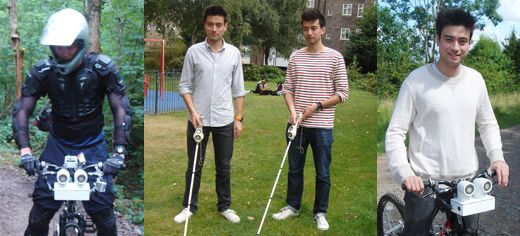
A novel way to help blind and partially sighted people navigate their way around pavements, buildings and even mountain bike tracks has been showcased in a new BBC television series.
The UltraCane uses ultrasonic waves - just as bats do - to reveal the location of obstacles. This data is then relayed to users through vibrations to the handle helping them to ‘feel’ their way around.
But this same technology, which originated as a research project at the University of Leeds, could potentially have broader applications. Last night viewers of the BBC series ‘Miracles of Nature’ watched a blind cyclist use the exact same bat-inspired technology to get him safely down a mountain bike trail.
The initial idea for the UltraCane came from work at the University of Leeds by engineer Professor Brian Hoyle, and colleagues. The technology was subsequently improved and re-developed for market by the company Sound Foresight Technology Ltd.
More information about the UltraCane is available from Sound Foresight Technology Ltd.Contact:
University of Leeds Communications & Press Office: Tel +44 (0)113 343 4031, email pressoffice@leeds.ac.uk
UltraCane: Ruth Badley, 01423 884 063, ruth.badley@btconnect.com